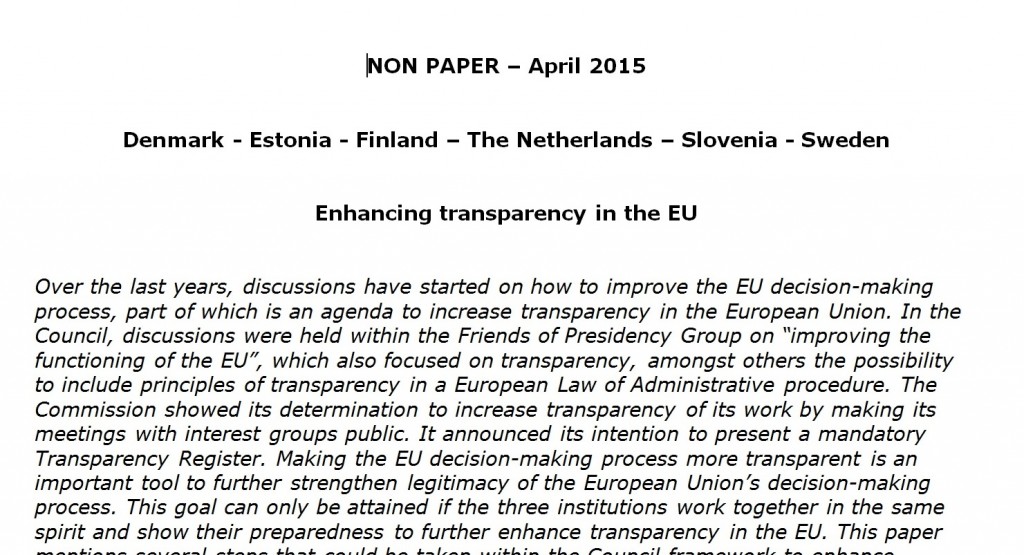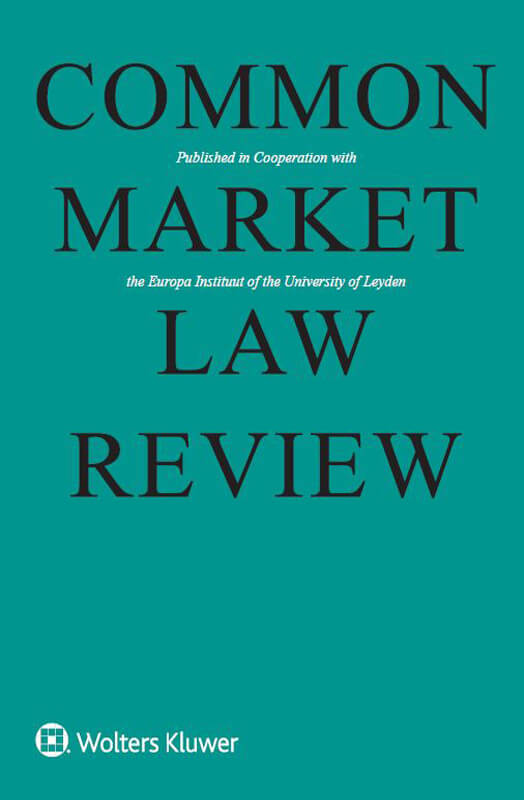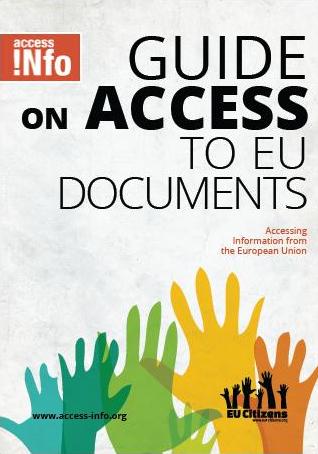Yesterday, Regulation 1049/2001 turned 20. Today twenty years ago, it was put on the books. Time to take stock of the EU’s first access to documents law with twenty key figures.

On Sunday, “Regulation (EC) No 1049/2001 of the European Parliament and the Council regarding public access to European Parliament, Council and Commission documents“, colloquially known as the “Access Regulation”, turned 20 years old.
It has been a rocky ride full of legal disagreements. Had, for example, the revision process set in motion in 2008 been adopted smoothly, Regulation 1049/2001 would have never reached this age in its current form. But it was exactly the contention that prevented (and still prevents) change from happening.
Meanwhile, the practice of implementing the Access Regulation has given rise to a lively policy world inhabited by annual reports, court battles, competing institutions, and academics studying all these phenomena.
We present Regulation 1049/2001 in twenty key figures.
Conceiving the law
29
Days by which the adoption of Regulation 1049/2001 exceeded the officially stipulated deadline. Article 255 in the the Treaty of Amsterdam required that an access to documents law should be adopted “within two years of the entry into force of the Treaty of Amsterdam”. The treaty eventually entered into force on 1 May 1999; Regulation 1049/2001 was formally adopted on 30 May 2001 and published in the Official Journal on 31 May 2001. Negotiators may prefer the less unpunctual version of history according to which 3 May was the decisive date; the day on which the European Parliament and the Council came to a final agreement.
6
Number of member states favourably inclined towards enhancing the transparency of EU decision making during the ‘Article 255 negotiations’. The figure (Denmark, Finland, Ireland, Netherlands, Sweden, UK) is an estimate by one of the MEPs who negotiated the Access Regulation and is broadly confirmed by academic observers and journalists. Although 6 out of 15 member states at the time may not seem that bad given the Council’s notorious reputation for secrecy, all but one of the transparency cheerleaders were small states. As such, they could just about summon a blocking minority.
Today, the number has risen to 9, judging by a note full of transparency-friendly policy proposals circulated in late 2019. However, with the Council having grown to 27 members in the meanwhile, the Transparency Club’s clout has sunken to beneath blocking minority levels.
19
Number of articles in Regulation 1049/2001. It took the legislative institutions 19 articles to iron out their compromise – slightly higher than the respectively 10 and 8 articles that the separate Council and Parliament Access Decisions preceding it had required. Yet particularly one article in Regulation 1049/2001 has become the focal point of subsequent litigation. This is by design: article 4 contains the legal exceptions on which the institutions rely when refusing members of the public access to a document.
Overseeing the law
24.6
Percentage of transparency-related Ombudsman inquiries as a share of all inquiries concluded in 2020. Transparency and access to documents are a high-volume constant in the ‘ombudsprudence’. Last year, the team of European Ombudsman Emily O’Reilly concluded 394 inquiries, of which 2 had been conducted at her own initiative. 97 of these contained a transparency-related dimension, according to the office’s annual report. Many inquiries derive from disillusioned access to documents applicants who prefer filing a complaint with the Ombudsman to slower, more costly, and more bureaucratic redress through the Court of Justice of the EU.
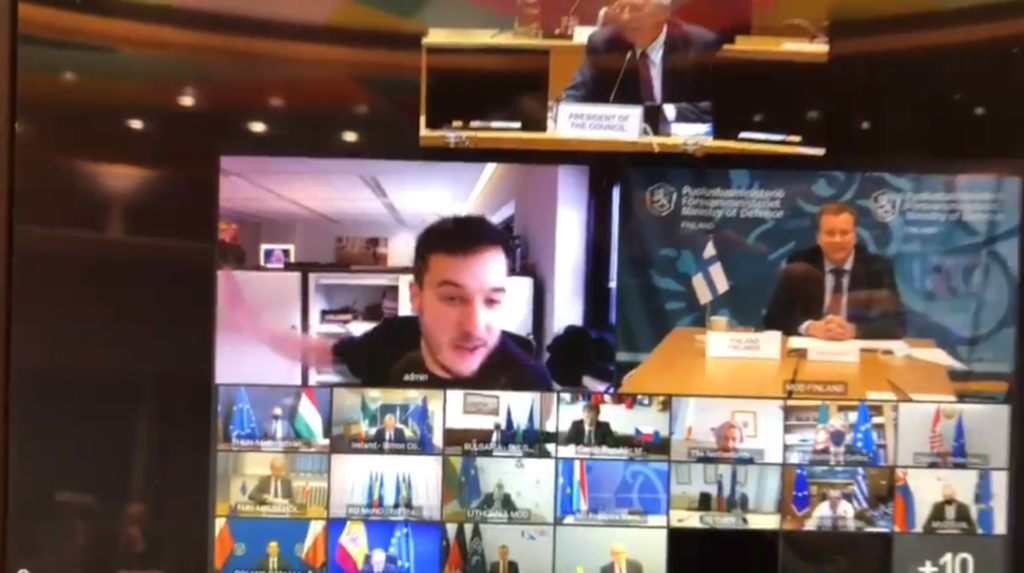
233
Number of judgments pertaining to Regulation 1049/2001 handed down by the Court of Justice of the EU. The Access Regulation is known for its judicialisation, and an estimate based on a case law database compiled by the Helsinki-based TrUE project puts a figure to that assertion. At 233 judgments including the General Court and the Court of Justice, this amounts to an average of 11.7 cases per year. The real figure is actually a bit higher, since Regulation 1049/2001 only entered into force in December of 2001. And if we were to include court orders and opinions, the figure would go up even further. It may indeed be fair to speak of “judge-made law” as professor of EU law Deirdre Curtin once did.
6
Number of Regulation 1049/2001 cases in which MEPs were involved. Seen in the light of the previous figure, MEP access litigation seems a negligible phenomenon. This is particularly so given periodical assertions that MEPs compensate their limited privileged information rights by recourse to the public access regime. While the number is indeed not very high, it must be pointed out that well-chosen litigation objects can make for potent strategic litigation. This is for example the case with the Turco action pertaining to legal advice of the Council Legal Service in the context of a legislative procedure. The case law this produced amounted to a bombshell that the Council still appears to be recovering from, given its defence in the recent Pech case.
11
Number of blanket presumptions against the right of access to documents. Ironically, the very Turco case that shook the institutions for its progressive interpretation of Regulation 1049/2001 also contained the seed for its subsequent hollowing out. In the Turco case, the court observed that in some instances, it may be generally presumed that all documents of a particular category come under one of the exceptions listed in article 4 of Regulation 1049/2001. Since then, the General Court and Court of Justice have identified a so-called ‘general presumption’ for 11 document categories. As an NGO litigant with experience with this legal argument argues, the risk of ‘general presumption creep’ is real, as this court doctrine opens the door for the institutions to argue for the existence of new categories in every access case. They have, for example, (unsuccessfully) done so in relation to documents pertaining to the legislative process. Another frequent access litigant has pointed out that the general presumption doctrine has no grounding in Regulation 1049/2001 and appears to contradict its operating principle of ‘the widest possible access’.
2
Number of cases in which an overriding interest in disclosure was found. By contrast, the doctrine of the overriding public interest in disclosure (refered to by transparency pundits as ‘OPID’) does have specific grounding in Regulation 1049/2001. It allows applicants to argue that even where a public interest militates against disclosure of a document, there is a public interest that outweighs the argument for non-disclosure. However, the court has barely developed this provision doctrinally, leaving it mostly a dead letter. Where it did engage with the OPID concept, the court reversed the burden of proof to the applicant’s side. Legal scholar Daniel Wyatt, who analysed the OPID test in practice argues that this has raised the bar impossibly high. He furthermore points out that in the sole two cases where the court did find an OPID, it failed to apply its own doctrinal test.
Revising the law
2
Number of recast proposals for Regulation 1049/2001. After a round of consultations, a first recast proposal was launched in 2008. This proposal soon required updating due to the pending entry into force of the Lisbon Treaty at the end of 2009, which changed the legislation’s legal base. When the 2008 proposal became bogged down in a relentless inter-institutional tug-of-war over whether certain definitions should be expanded or narrowed down (leading to a commensurate enhancement or limitation of transparency right), the Commission in 2011 introduced a second proposal, aimed at merely aligning Regulation 1049/2001 with the Lisbon Treaty. Interestingly, both proposals were treated alongside each other, as the 2008 proposal was not withdrawn upon the introduction of the 2011 proposal, leading to the necessary confusion and second-guessing about the Commission’s intentions.
12
Number of years spent trying to revise Regulation 1049/2001. The Access Regulation came with an in-built update clause. According to article 17(2), the Commission was to consider no later than 31 January 2004 whether a revision of the Access Regulation was necessary. Over time however, it became a toxic dossier marked by irreconcilable institutional positions. One treaty revision, two associated court cases, three Commission / European Parliament terms, and various Presidency attempts at rescucitation later, still no conclusion was in sight. In 2020, after 12 years, the incoming Von Der Leyen Commission quietly removed both proposals from its legislative work programme.
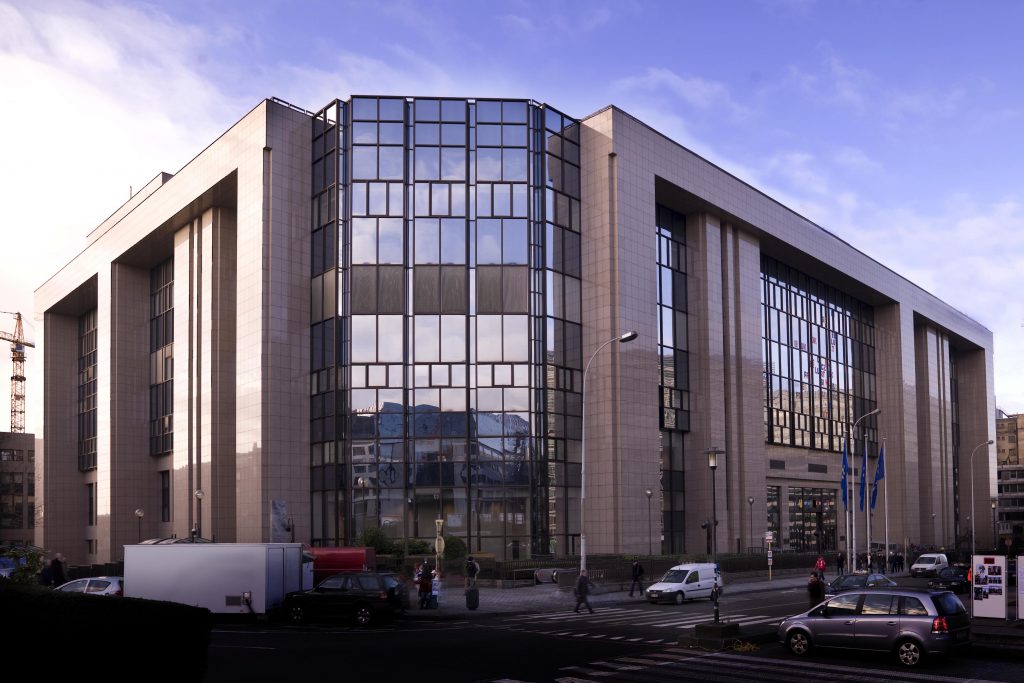
See also
Implementing the law
73,103
Number of references to documents entered in the public registers of the EU institutions in one year. The Parliament, Council, and Commission in 2019 registered this amount of documents (most recent figure currently available). Although the estimate may be slightly uneven: in some cases, the institutions do not provide clarity on whether numbers include just the original version or all language versions (documents are at times translated in the EU’s 23 official languages, so you can imagine the difference that makes). Either way, the registers contain just a fraction of documents actually produced. For example, documents circulating within the parliamentary groups are excluded, as are informal Council ‘working documents’ and most of the Commission’s regular documents. The institutions argue that this is perfectly legal, as it is up to them to define what constitutes a document for the purpose of the Access Regulation, and the duty to register documents is clausulated. Transparency activists however beg to differ.
34
Average number of working days the Council needs to handle an access to documents appeal (so-called ‘confirmatory application’). This figure constitutes the Council’s implementation of Regulation 1049/2001 in the most recent year (2020). Given that Regulation 1049/2001 foresees in a maximum number of handling days of 15, once extendable by another 15 days, this track record cannot exactly be called good. However, in a multi-year drive towards efficiency gains, the Council significantly brought back handling time from 55 days on average in 2016. The Council is certainly not alone in its lengthy handling time. The Commission in its turn simply chooses not to report its handling time (nor does the Parliament, by the way). However, in recent internal documents, it has admitted that it faces structural difficulties to adhere to legally set response deadlines.
52.8 - 98
Percentages of requested documents fully disclosed. As these two figures show, the range of documents fully disclosed upon initial requested varied widely between the EU’s three institutions in 2019. The Commission reports directly giving full access to 52.8 per cent of the requested documents, while for the Council this figure is 47.7 per cent. The Parliament stands out with a whopping 98 per cent. Again, this discrepancy is likely due to different measurement methods. The Parliament does not break down successful requests by documents as the other institutions do, but leaves it at the level of requests (sometimes a single applicant can request access to large numbers of documents). On the whole the Parliament offers the most scant information and statistical data of all the three institutions – yet reports by far the most transparency-generous implementation. Whether this is a coincidence or image engineering is anyone’s guess.
Putting the law to use
10,578
Total number of documents requested under Regulation 1049/2001 with the EU’s three core institutions in one year. This number represents the most recent known figure (that for 2019). It is not to be confused with the number of applicants – in some cases, a single person can request large numbers of documents. This has caused some interpretative conflict over the meaning of a very large or ‘vexatious’ request that would signify an undue administrative burden. The Commission has previously denounced “nutty NGOs” [sic – really!] for wasting officials’ time, but also academics seeking large-scale data for purposes of statistical extrapolation have encountered problems.
?
Share of lobbyists requesting access to documents held by the EU institutions. The argument is often raised that while the right of access to documents is meant to benefit the whole of the public in its exercise of democratic rights, those who benefit the most are murky lobbyists pulling strings behind the scenes. Whether this is accurate is impossible to say for sure, if only because Regulation 1049/2001 confers transparency rights on European citizens without obliging them to provide reasons or identify themselves when exercising them. In practice, the institutions try to keep track of the background of applicants, through information they voluntarily provide (e.g. through email signatures). Yet even then, the categorisation of applicant types is insufficiently clear and comparable to allow us to establish the number of lobbyists as a share of all applicants. A very tentative and rough estimate would put the figure at maximally 16 per cent for the Parliament and 47.3 per cent for the Council. But the figure is shaky and unreliable – should lawyers and consultants always be considered lobbyists? and what guarantee do we have that lobbyists don’t apply for documents on their personal title?
350
Applicants appealing an initial decision concerning their request for access to documents in one year. In 2019 (most recent figure), as in other years, only a fraction of applicants appealed the institutions’ decision to refuse access to (part of) the documents requested through a so-called ‘confirmatory applications’ (internal administrative appeals). At a mere 14 confirmatory applications, this score was by far lowest for the Parliament. However, as a share of initial applications, it is by far the highest (13.9%), since the Parliament overall receives the fewest requests among the Union’s three central institutions. In the Council, less than 2% of initial applications are appealed. Why these differences are so big is anyone’s guess. Perhaps you have an idea?
Transparency online
20(+?)
Number of registers currently operated by the three main institutions. EU decision making is diverse and multifarious, and this is reflected by the sheer number of registers across which publicly available information is scattered. From internal documents to agendas registers, and from the Parliament’s ‘legislative train’ to the Commission’s ‘comitology records’, vast amounts of Union documents and data can be found online. In fact, the amount of registers is so large that we are not fully certain that we have not overlooked some in this count. An interinstitutional Agreement brokered in 2016 sought to bring a little more order to the prodigal data outgrowth, foreseeing in a joint legislative observatory containing all data and information related to legislative decision making. Unfortunately, it never saw light. Another new initiative by the Commission intends to systematise the institution’s approach to the public disclosure of its information. For now, civil society-run websites such as AsktheEU.org, Votewatch.eu, and Parltrack.org seek to bring some method to the madness for all non-EU policy wonks.
477,141
Number of documents directly consulted on the EU institutions’ registers in one year. Only a quick glance at these 2019 figures is needed to see just how pivotal direct online access to EU documents is compared to the option of applying for access to documents (known in jargon as ‘passive transparency’). The rate of direct access is a multiple figure of the number of access applications. In spite of the complex task of locating the right document in the right register, the information accessible through the internet has thus become an indispensable part of the Union’s public communication efforts. Though to add some context there as well, the figure still only amounts to 1 out of every 932 EU citizens consulting a document per year – and probably fewer, given that non-EU citizens also consult these registers. Hardly a massive outreach…
Studying the law
>18
Number of research events related to EU transparency over the years. From Amsterdam to Prague and from Finland to Italy, the question of EU transparency has over the years been discussed in many cities across Europe. Often in small-setting seminars (OGEU, RECONNECT, TrUE), sometimes as a panel taking place within a large conference (GCTR, ECPR), and in more recent times of pandemic, through various webinars (EUI, ECI). In these events, discussions of Regulation 1049/2001 and the fulfillment of its normative promises was typically never far away. The figure of 18 derives from a quick count by the author. The real number is an unknown quantity larger.
11
Number of years the Open Government in the EU Blog has covered transparency in the EU. The OGEU Blog saw light in 2010, as part of the Utrecht-based Open Government in the EU academic research project. It has since then migrated to Helsinki, where it is accommodated by the TrUE project. Besides its reports of recent policy developments, the OGEU Blog brings readers an annual digest of online news reports on EU transparency, which can be accessed by clicking on the banner below. Happy reading!



